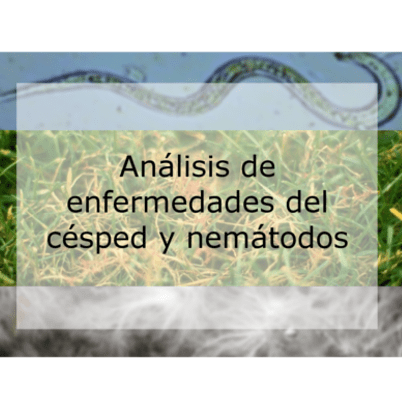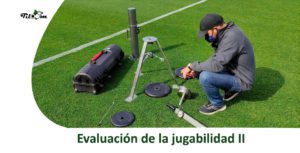The disease known as Rapid Blight o Rapid blight in English affects C3 grasses such as Poa Annua and Trivialis, Lolium perenne, or Agrostis stolonifera. It is related to drought-stressed lawns which at the same time suffer from the sodium accumulation for irrigation water.
Rapid Blight aetiology
C3 or cold-climate turfgrasses are the ones that suffer from the disease, although C4 turfgrasses can be asymptomatic hosts.
The Labyrinthula terrestris is the pathogen is more similar to seagrass pathogens than to any other pathogen, which is why it has only recently been identified and why it is so similar to saline soils and saline waters.
Causal agent of Rapid Blight
The disease of the Rapid Blight o Rapid blight is caused by the L. terestris. This organism is made up of spindle cells, which does not form myceliumThe traffic is very fast, but it moves easily through the traffic on the turf and generates nuclei of high concentration.
Symptoms of Rapid Blight
The early symptoms from Rapid blight are:
- Slightly sunken patches of turf
- Darkening of the initial turf
- Brownish or orange necrotic lesions from the crown
- Brownish or orange necrotic lesions from leaf tip to leaf tip
The subsequent symptoms from Rapid blight are:
- Union of lesions between crown and tip
- Small patches that enlarge and merge with each other
- Roots and symptoms similar to Pythium or salinity damage
Most susceptible species
The most susceptible varieties Agrostis tenuis, Lolium perenne, Poa annua, Poa trivialis and Ray grass perrenne.
Control methods
Few chemicals have a serious impact on blight, functional active substances are known, such as mancozebthe trifloxystrobin and the pyraclostrobin. The risk of causing resistance is very important and serious, so the rotation between products should be as frequent as possible, although depending on the market in which we find ourselves, it will not be possible to treat the disease due to the lack of availability of suitable products. There is also the danger of generating resistance to other pathogens such as anthracnose. The most feasible way to treat the disease is by means of cultural work.
Its management is mainly focused on turf cultivation.
It has been observed that sodic or sodium-sodic soils as well as crops under drought stress are more prone to rapid blight. As frequent salt flushes as possible are recommended to maintain low salinity levels. Fescues are more resistant spices and the market is starting to offer resistant varieties. In areas compatible with Raygrass, it is important to plant salt tolerant species.
To combat and displace sodium, gypsum fertilisation helps to create a less tolerant environment for the pathogen, and potassium fertilisation has also been found to affect it negatively. The use of wetting agents in the affected area and improved drainage to facilitate the evacuation of salts are positive. This combination is the best way to tackle the disease.
It is also key to take care when mowing the lawn as the spindle cells of the L. terestris enter the flat tissue through open wounds
The growth temperatures of the Labyrinthula terrestris range from 15ºC to 30ºC, above and below which growth is limited. On the other hand, its tolerance to salinity is high, as it grows well at high salinities of 3.5 to 10.5 dS/m.
The impact of Rapid Blight is so significant that in the United States it is considered one of the most destructive diseases of Poa annua greens.
Analysis and diagnosis Rapid Blight
It is exciting to be able to identify the disease in the field and with a simple microscope you can locate the cells of the disease. Labyrinthula terrestris preparing a grass blade sample with water to disperse the cells.
Source: Stowell, L.J., Martin, S.B., Olsen, M., Bigelow, D., Kohout, M., Peterson, P.D., Camberato, J. and Gelernter, W.D. 2005. Rapid Blight: A New Plant Disease.
Source: Kerrigan, J.L., M.W. Olsen, and S.B. Martin. 2012. Rapid Blight of Turfgrass. The Plant Health Instructor. DOI: 10.1094/PHI-I-2012-0621-01











